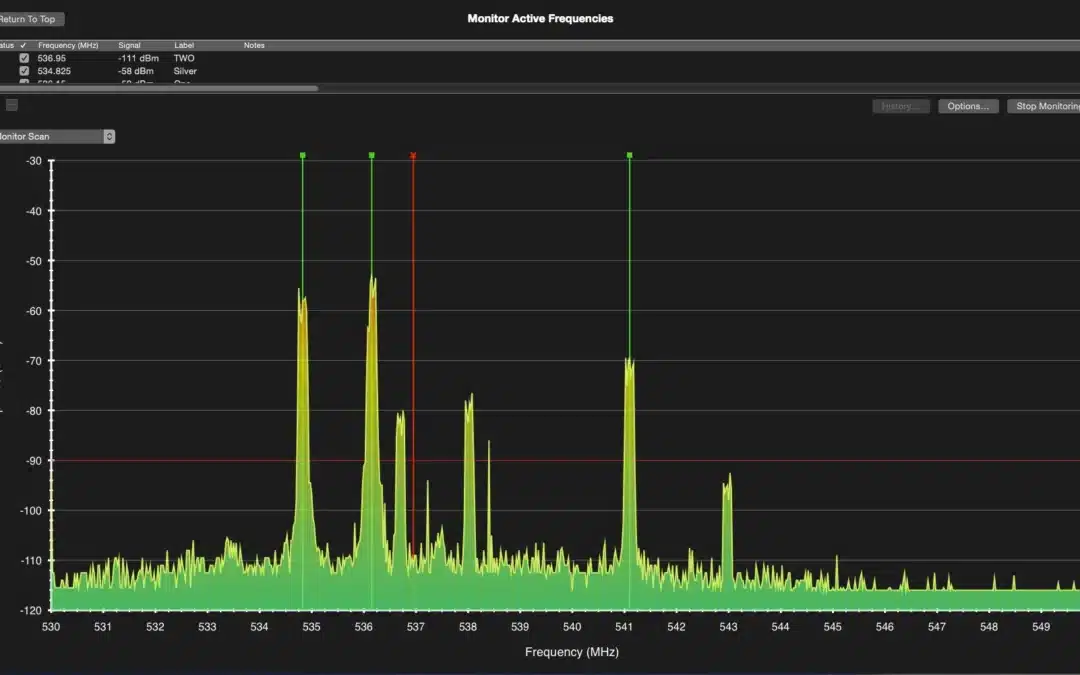t’s the moment every live sound engineer dreads. The CEO is mid-sentence, the lead singer is hitting the final chorus, or the bride’s father is giving his speech—and the audio cuts out. That sudden, deafening silence is followed by a burst of static. The culprit? A wireless microphone dropout.
In today’s hyper-connected world, especially in bustling cities like Bengaluru, the airwaves are more crowded than ever. As of August 2025, interference from 5G signals, broadcast TV, and countless other wireless devices creates an invisible traffic jam that can bring your event to a standstill.
Mastering wireless technology is no longer just a bonus skill; it’s a fundamental requirement for any serious audio professional. This guide will walk you through the professional workflow to ensure your wireless audio is crystal clear and completely reliable, every single time. It’s a core skill we instill in every student in our audio engineering programs.
Why Your Wireless Is Failing: The Invisible Traffic Jam 🚦
Imagine trying to drive down a highway with no lanes and no rules. That’s the modern radio frequency (RF) spectrum. Your wireless microphones, in-ear monitors (IEMs), and instrument packs are all trying to find a clean, open lane. When two signals try to occupy the same space, you get interference, noise, and the dreaded dropouts.
The key to success is frequency coordination: the process of intelligently assigning a unique, clean frequency to every wireless device in your setup.
Your Modern RF Toolkit: Gear Up for Success
Before you even think about frequencies, you need the right tools for the job. Relying on the “scan” button on your receiver is like navigating a city with a map from 20 years ago.
- Directional Antennas: Standard whip antennas are okay, but paddle (or “shark fin”) antennas are a game-changer. They focus their reception towards the stage, rejecting interference from the sides and rear. Proper placement is crucial: maintain a clear line of sight to the transmitters!
- RF Scanners & Software: This is the non-negotiable heart of modern wireless management. Software like Shure® Wireless Workbench® or Sennheiser® Wireless Systems Manager paired with an RF scanner allows you to see the entire frequency landscape in real-time. It’s like having high-tech goggles that let you see the invisible RF noise you need to avoid.
The 5-Step Pro Workflow to Bulletproof Wireless Audio ✅
Follow this proven workflow to move from guessing to guaranteeing a clean show.
Step 1: Scan the Venue (The Right Way)
Before you do anything else, perform a comprehensive RF scan of the room. Crucially, do this after the lighting and video departments have powered up their gear. LED walls, lighting fixtures, and other electronics are major sources of RF noise that you need to see and avoid.
Step 2: Plan & Prioritize Your Channels
Not all audio is created equal. Your lead vocalist, keynote speaker, or master of ceremonies needs the most robust, reliable frequency. In your coordination software, list your channels in order of importance. This ensures your most critical inputs get the best “lanes” on the RF highway.
Step 3: Calculate & Avoid Intermodulation (IMD)
This is where the real “magic” happens. When multiple transmitters are used close together, they create their own interference called Intermodulation Distortion (IMD). These are “ghost” frequencies you can’t see on a simple scan. Thankfully, you don’t need to be a math genius! Your software will automatically calculate all potential IMD products and find frequencies that are clear of both local interference and the interference your own system creates.
Step 4: Deploy Frequencies to Your Gear
Once your software has generated a safe frequency list, it’s time to program your gear. Modern networked systems allow you to deploy the entire list to your receivers with a single click. Double-check that each transmitter is synced to its corresponding receiver with the new frequency.
Step 5: Monitor Relentlessly During the Show
Your job isn’t done at soundcheck. Keep your coordination software open on a laptop during the event. This allows you to monitor the RF signal strength and battery life of every transmitter in real-time. If a new source of interference appears, you’ll see it happening and can be prepared to act.
Frequently Asked Questions (FAQ)
Q: Can’t I just use the ‘scan’ button on my receiver?
A: While the scan button on a receiver is a good start, it’s dangerously incomplete. It can find an open frequency based on outside interference, but it has no knowledge of your other wireless systems. It cannot calculate Intermodulation Distortion (IMD), which is a major cause of dropouts in multi-channel setups. Professional coordination software is the only way to see the complete picture.
Q: Do I need to buy expensive software for this?
A: Great news! The most powerful, industry-standard software tools like Shure Wireless Workbench and Sennheiser Wireless Systems Manager are completely free to download from the manufacturers. The real investment isn’t in the software, but in acquiring the knowledge to use it like a pro.
Q: What’s the biggest mistake people make with wireless antennas?
A: The most common and critical mistake is poor placement. Antennas should always have a clear, unobstructed line of sight to the transmitters (the mics, the belt packs). Sticking them in the back of a rack, behind a video screen, or leaving them on the floor is a recipe for disaster.
Q: Is RF coordination really harder in Bengaluru?
A: Yes, significantly. As a major tech and media hub, Bengaluru has an incredibly dense and competitive RF environment. The sheer number of corporate events, concerts, mobile devices, and broadcast signals means the “open lanes” for your microphones are much harder to find, making professional-level coordination absolutely essential for a successful show.
Q: How can I get hands-on experience without risking a live show?
A: That’s the most important question. Reading theory is one thing, but building confidence requires practice. The best way is in a controlled lab environment where you can experiment and learn from mistakes. This is precisely why dedicated practical time using professional gear in our Live Sound course is so crucial for building real-world skills.
Ready to Become an Indispensable Audio Pro?
This guide covers the fundamentals of a skill that production companies and artists are desperate for. It’s the kind of deep, practical knowledge that makes an audio engineer truly indispensable.
While reading about it is a great start, nothing beats hands-on experience with industry-standard equipment under the guidance of expert instructors. Our Live Sound Engineering Diploma dedicates extensive time to RF coordination, ensuring our students can walk into any professional environment with confidence.
Ready to turn your passion for sound into a professional career?

